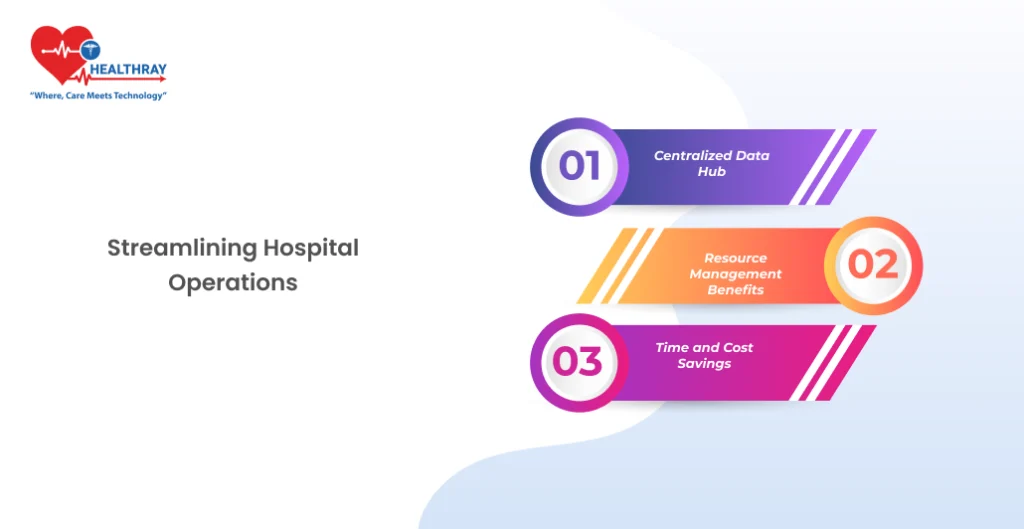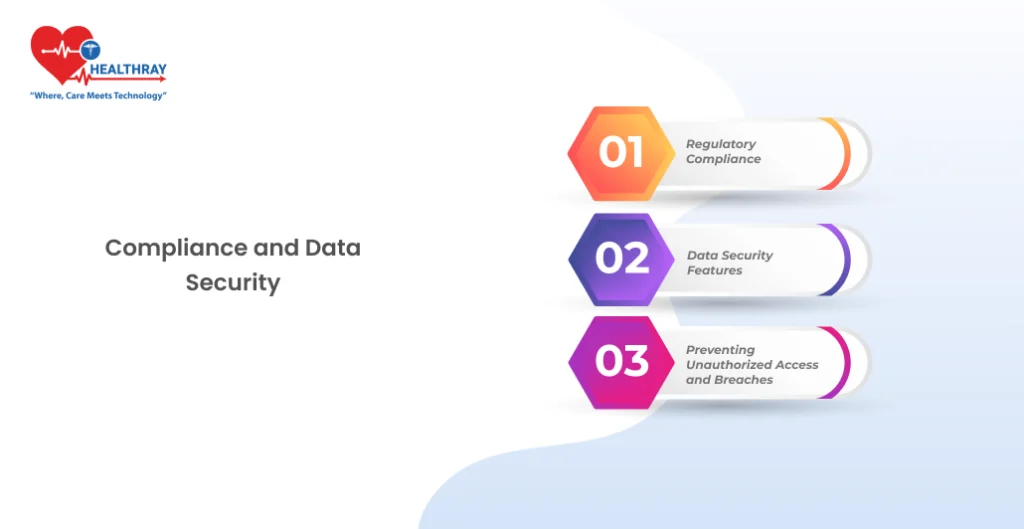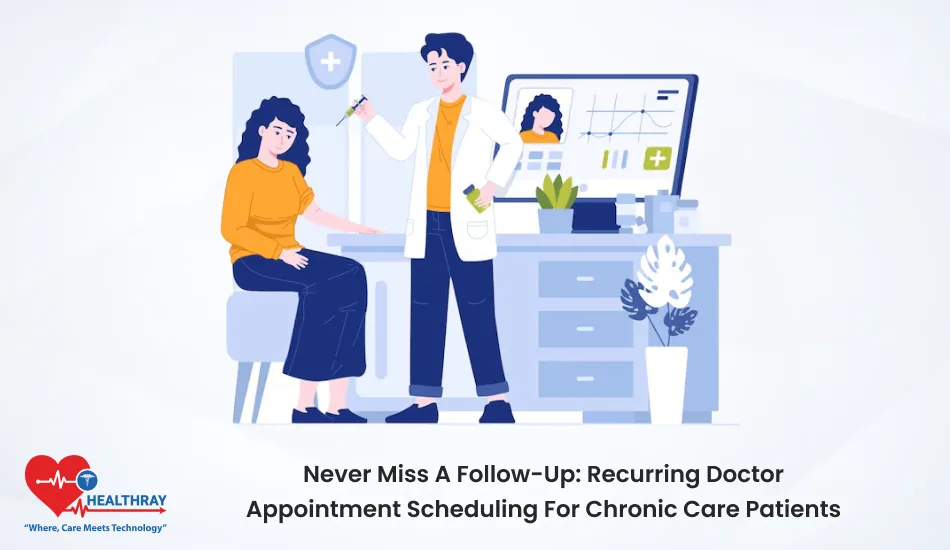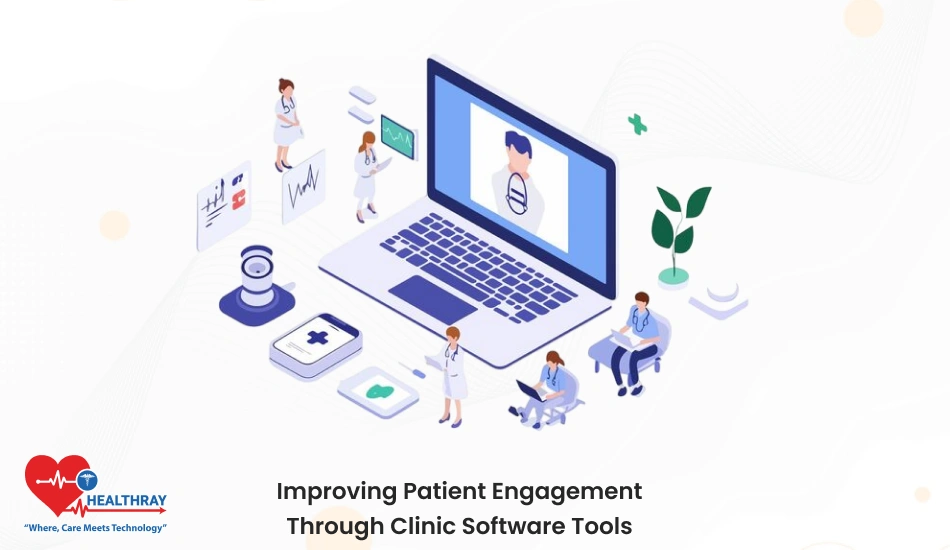Operations in hospitals are challenging due to the heterogeneity of components that have to be managed in some way. This is the domain in health care organisations where Health Management Information System (HMIS) programmes can make a difference. For hospital owners, COO, CTO, and even physicians in general who want a more streamlined approach to managing everything from patient medical records to billing and auditing, HMIS software has very quickly become essential. But what are the actual benefits that can be anticipated from HMIS software by a hospital?
This article will talk about the way in which Hospital Information Management System software increases patient care, data security and financial management while at the same time reducing administrative workload. We’ll go over the essential elements of an HMIS system and discuss how purchasing this software can revolutionize hospital operations.
What is HIMS Software?
Hospital Information Management System (HIMS) software is an integrated digital tool for the management of the primary clinical and operational tasks of a hospital. HIMS makes abstruse operation easy, reduces administrative tasks,and guarantees that the most critical information is always available and structured by centralizing important tasks around obtaining patient history and making appointments, managing finances and stock. It is intended to hospitals to efficiently manage clinical and financial processes and will consequently result in increased productivity and quality of patient care.
Key Components of HIMS Software

Patient Data Management
This module may allow patients’ records, including diagnosis, treatment schedules and history, to be securely stored digitally (mo). Continuous and current patient information ensures quick information access for medical staff and allows for adequate informed decision making.
Scheduling and Appointment
HIMS simplifies the appointment process for patients and staff. It offers a unifying control point for appointment scheduling, logging, and appointment management, thus helping reduce patient waiting times and improve the patient experience.
Billing and Financial Management
In this module, bill ing is automated, claims are adjudicated, and the revenue cycle is controlled. Through the minimisation of human errors, it can provide faster, more precise financial processes. It also provides real-time information of hospital finances that can be used to develop more efficient budget control.
Inventory and Resource Management
Proper resource management is essential in hospitals. HMIS software is for recording medical equipment, hospitals, etc. It prevents shortages, minimizes waste, and supports timely inventory replenishment, enhancing hospital efficiency.
Streamlining Hospital Operations

Centralized Data Hub
HIMS is a central database of hospital records that obviates the use of paper filing and minimizes the risk of registering mistakes in the patient. Making use of the integration of patient and operational data, the hospital staff have easy access to the latest information in all departments. This central repository provides more and more precise information, which is critical for quality and timely treatment plans.
Resource Management Benefits
Optimal use of resources is crucial for any hospital to operate effectively. Using this on-the-fly analysis of the use of resources HIMS-based applications provide the function of the regulation of staff scheduling, management of the beds occupancy and level of medical stock. This realization has resulted in the avoidance of shortages as well as stockpiling, which save both money and enhance patient care, by ensuring that every needed resource is available.
Time and Cost Savings
HIMS allows medical institutions to automate what would otherwise be time consuming and burdensome administrative tasks i.e., hospitalization). Digitization of patient registration, booking, billing and discharge processes is being used to reduce direct manual input. These automated workflows reduce not only the operational cost but also the patient’s waiting time, thus improving the patient’s experience. Hospitals can make better use of their resources by diminishing waste through diverting more resources to patient care and fewer resources to bureaucracy.
Through HIMS hospitals can be better managed, and not only the quality of care can be improved, but also the operational efficiency. A hospital can decrease cost and consumption of resources, in addition to burden of being patient and staff at the same time.
Enhancing Patient Care and Engagement
Access to Accurate Patient Data
Hospitals can house patient information in a complete, respectively closed system by HIMS. This is feasible on the condition that physicians be able to easily access information based on the best available evidence concerning their patients’ medical histories, diagnoses, and ongoing treatments [12]. Due to access to complete accurate records, doctors are less prone to error in the clinical decision making process. Moreover, by strengthening provider partnership, this centralized data paradigm enhances treatment response.
Patient Portals and Appointment Scheduling
Contemporary HIMS software frequently adopts patient portals, which enable patients to schedule appointments, access medical records, and communicate with clinicians. It is to the benefit of patients that they can accrue more and more control over both the acquisition of their medical care and hospital scheduling. The schedule of automated appointment reminders, on the other hand, not only minimizes no-shows, but helps hospitals use their resources in a more effective manner.
Telehealth and Remote Monitoring
Integration of telemedicine within HIMS creates healthcare access, particularly for patients in rural or underserved locations. Patients can be both seen and viewed from home, and remotely monitored in relation to some disease conditions. In particular, there is an advantage with telehealth in the post-visit appointment feature which allows for reduction in the need to schedule in-person face-to-face visits, and patient satisfaction.
HIMS significantly enhances patient engagement, so that patients can actively engage in their care. Through the focus on access and ease-of-use, this concern regarding access and convenience not only increases satisfaction and health for patients, but it also facilitates a patient-centered model of care.
Compliance and Data Security

Regulatory Compliance
HIMS software has been created keeping in view the healthcare legislations and standards (e.g., HIPAA in the US and GDPR in Europe). Compliance is not only a legal right but also of paramount consideration in maintaining the trust of patients for hospitals. HIMS software may allow for compliance on the issues of safeguarding patient data, maintaining a complete and valid audit log, and protecting data access. These capabilities facilitate the ability to meet the complexity of regulatory obligations and avoid potential fines resulting from data breaches or failure to comply.
Data Security Features
Security is the top priority of any health care institution, due to the sensitive characteristics of the patient information. HIMS contains a set of security features for protecting such data, including encryption, role-based access control, and 2-step verification. These security measures are programmed in that sensitive information is only acquired by authorized people. Also, HIMS software are commonly equipped with audit trails functionalities, which record who has access to what data and when, thus providing an even stronger security and accountability.
Preventing Unauthorized Access and Breaches
In the context of the increasing role of cyber threats in healthcare, Hospital Management Software is used to protect hospitals from unauthorized access and possible attacks. Firewall, scheduled data consistency checks, and network surveying are typical for many HIMS platforms and form a strong barrier against cyber attacks. This comprehensive security approach minimizes the risk of data exposure, helping hospitals protect patient information and maintain public confidence.
First of all, HIMS not only helps to enhance regulatory compliance and data security by comprehensively unifying appropriate protection as an integral part of h, For hospital administrators, it does not imply that data security is no longer a concern them, but they should put more emphasizes on patient care.
Financial and Insurance Management
Automated Billing and Claims Processing
Using automated billing and claims management, HIMS makes possible the management of the complexities of hospital finance, among other areas. By utilising digitisation of the invoice and automating the claim submission process, HIMS software speed up reimbursement, reduces the risk of errors, and provides support with the revenue cycle. Not only can the efficiency save costs, but also prevent expensive mistakes, thus the hospitals’ overall financial sustainability will be enhanced.
Insurance Verification and Claims Tracking
In the absence of a system in place, it can take a lot of time to verify patient insurance information and monitor the status of claims. In order to verify patient eligibility at the time of registration and during therapy, the HIMS software is linked to health insurance databases, automatically completing the process in both situations. It helps claims to be filed correctly and thus, there are fewer rejections and faster reimbursements. Furthermore, the system enables speedier, more economical financial processes by enabling hospitals to track claim status and anticipate potential problems that may delay the payment.
Real-Time Financial Analytics
Live financial performance data currently at the disposable of hospital managers using Hospital Information Management Systems. By keeping an eye on cash flow, revenue cycles, and unpaid claims, these analytics facilitate the identification of patterns and potential areas for development. This data-driven methodology can be supported with enhanced financial planning, budgeting, and decision process with resulting improved hospitalization outcomes.The resulting, which in turn, results in increased operational efficiency and profitability of the hospital.
Hospitals can streamline the payment process, decrease staffing, and increase financial performance through hospitals financial management modules, thus, increasing the funds available to give better care to patients.
Selecting the Right HIMS for Your Hospital

Scalability and Customization
It should also be borne in mind when choosing an HIMS system that it should be available to provide scalability from the hospital bed size, as the size of the hospital may be growing and growing, for a multispecialty or growing hospital. A one-to-all method that does not take into account the patient hospital differences in size and sub-specialisation is not adequate. As the hospital size grows, the functionalities of the appropriate HIMS software should be able to be scheduled to meet the needs of every department. For example, a small hospital may not develop the more advanced telemedicine module at the outset, but may need it as telehealth is increasingly embedded in practice there.
Integration with Existing Systems
Hospitals also have a number of other systems for lab reporting, pharmacy management, and electronic health records (EHRs) etc. Integrating soft wares, which are easily compatible with those systems, is especially important to guarantee continuous and uninterrupted data transfer as well as, at the same time, preventing data fragmentation. This integration reduces manual data entry and makes all patient information available to the hospital staff as accessed through the one interface, thereby improving efficiency and patient care.
Support and Training
In the above a new HIMS system to be implemented successfully, strong support and training are necessary. Workers should feel comfortable and unconstrained by the software. Hospitals may also need to think about the HIMS provider which possesses full onboarding, full training sessions, and full customer support when comparing them. This guarantees that staff can fully exploit all of the software’s capabilities and that there is no problem when staff are being ‘moved’ to a new system.
Budget and ROI Considerations
While the cost of HIMS software can be significant, it should not be overlooked that the potential for return on investment (ROI) should be considered. For most hospitals, HIMS software becomes its own economic return by increasing efficiency, decreasing error, and improving patient satisfaction. For example, HIMS in Healthcare that streamline billing, minimize resource waste, and prevent data breaches save on costs that would otherwise impact the hospital financially.
Selecting the right HIMS software relies on whether or not it meets current needs and how it will accommodate future expansion. Through a scalable, integrative, and stable system, it is up to the choice of hospitals that their HIMS investment can result in continuous operational and patient care value over time.
Conclusion
Hospital Management System is a viable solution for hospitals to effectively manage the complexity of health care operations. Through the centralization of patient data, automation of administrative tasks, and provision of secure data management, HIMS provides improvements in efficiency at the hospital and better patient care. Given to hospital decision-makers, the cost on a proper HIMS can result not only in cost savings but also in the optimisation of workflows and updating the distribution of resources in favour of staff whose ability to deliver high quality patient care is guaranteed.
By carefully choosing an HIMS, it’s possible to change the dynamics of hospital operations, allowing hospitals to expand and flex in the face of changing health care requirements. With the right software in place, hospitals can focus on what matters most—providing effective, patient-centered care.





